Taking in Princess Seams to Fit Plus Size Formal Wear
Many dresses have princess seams in the front. They make the bodice
more shapely. The bust area of a dress should fit snuggly against the
body.
Plus size gals need the bust area to be large enough to
accomodate "the girls". But this often creates a problem across the
upper edge of the dress. It is too large to hug the skin and it gaps
open.
The following instructions will illustrate how to take the
princess seam in on formal gowns. You can use the instructions to alter a
prom gown, bridesmaid dresses or even a bridal gown. The amount to take
in varies by wearer, of course, but on a plus size gal it may be as
much as 3" per side. This may be too much for one seam to be taken in. If it distorts the fit, Take part of the princess seam in and part of the side seam. The process is exactly the same.
A Note About Terms I've Used ...
I've made some assumptions in labeling different parts of the dress.
A Formal Dress ,
for our purposes, is a dress or gown made from a satin or silk type
fabric, is often lined, and could be strapless. Most formal gowns have
boning in the bodice. Many have this type of design.
The bodice is
the area of the dress above the waist. Sometimes the seam dividing the
bodice from the body of the dress is not at the waist at all, but under
the bustline.
The Upper Edge is the top part of the dress going across the chest, under the arms and around the back. It can have straps or be strapless.
The Fashion Fabric is the outside fabric, the "right side" of the dress. The opposite of this would be the "lining"
Here's What You'll Need ...
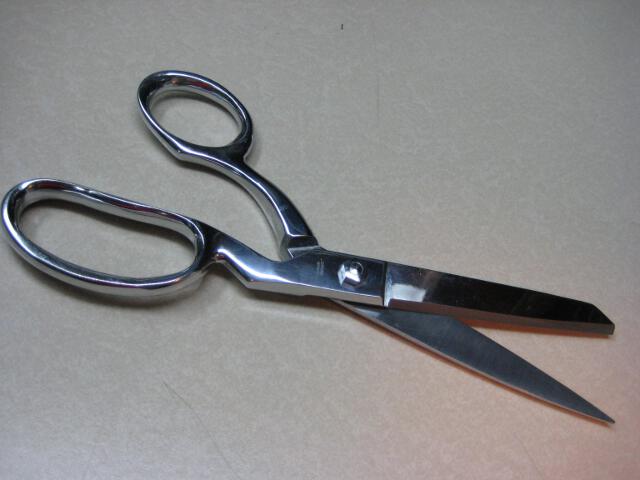
|
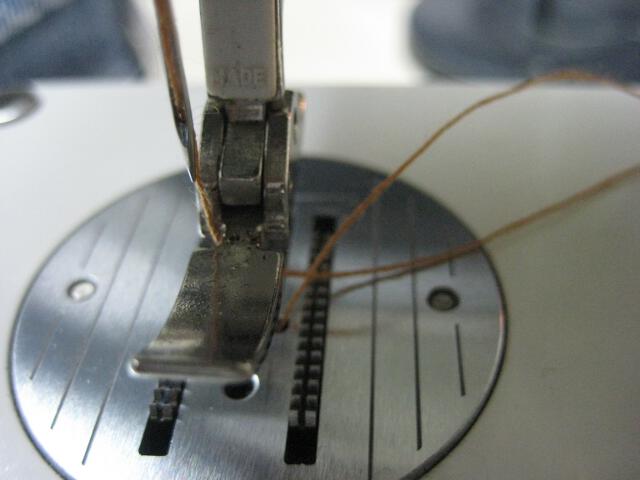
|
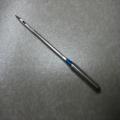
|
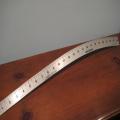
|
|
Scissors
|
Zipper Foot
|
Heavy Duty Needle
|
Ruler
|
Chart One: Rip Out Stitching
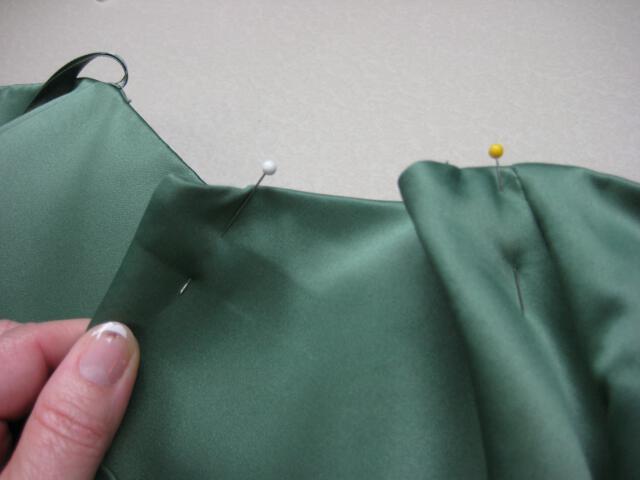
|
STEP ONE: OBSERVE
The dress has been pinched and pinned where the seams need to come in. The pins were placed to the side of the princess seam, since pinning through boning is hard to do. Measure and transfer that amount to the seam.
|
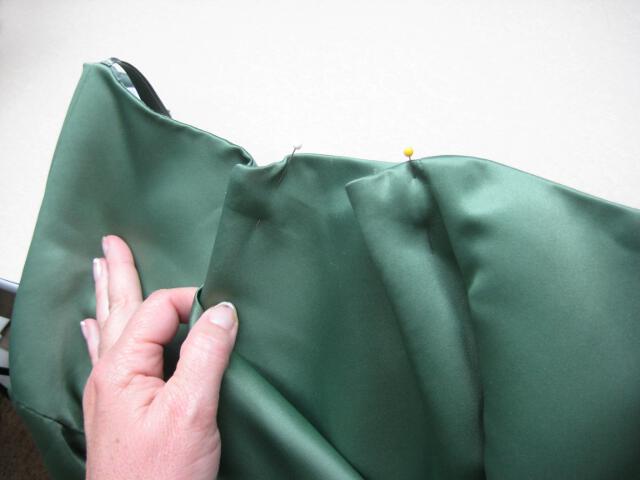
|
STEP TWO
Here is a wider view of the dress as it is marked. In this case, there is a lot to be taken in. This happens in a larger busted girl when the bust itself fits pretty well, but the upper edge is way too big.
|
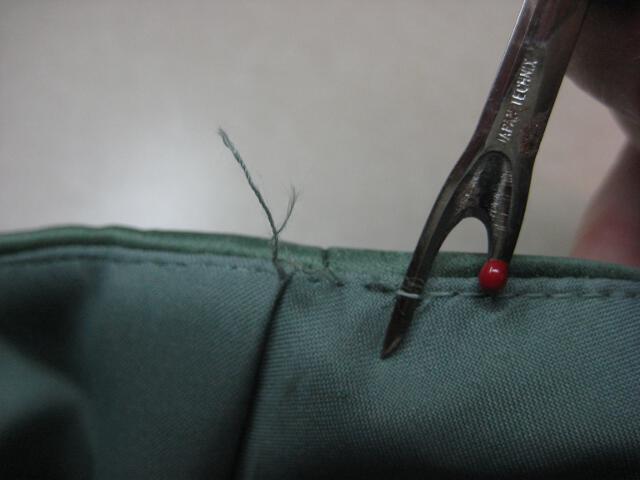
|
STEP THREE
Removing the understitching. Rip the stitches on either side of the princess seam, where your pin marks are and extending beyond about an inch and a half. This gives you room to work on the seam.
|
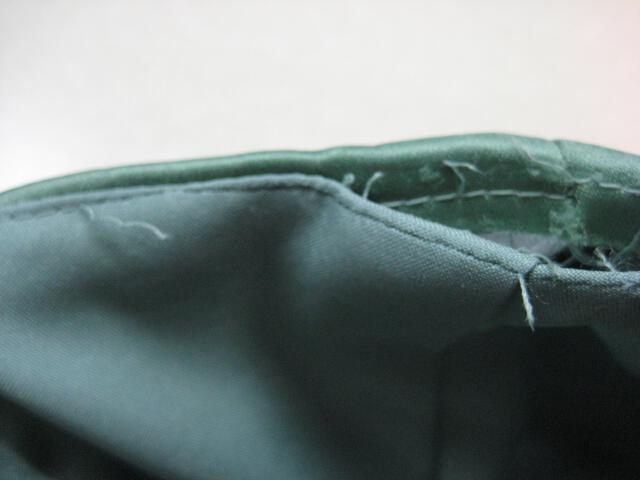
|
STEP FOUR
Remove the stitching joining the lining to the fashion fabric. Remove these stitches on both sides of the princess seam, but not as far as the understitching you removed in Step Three.
|
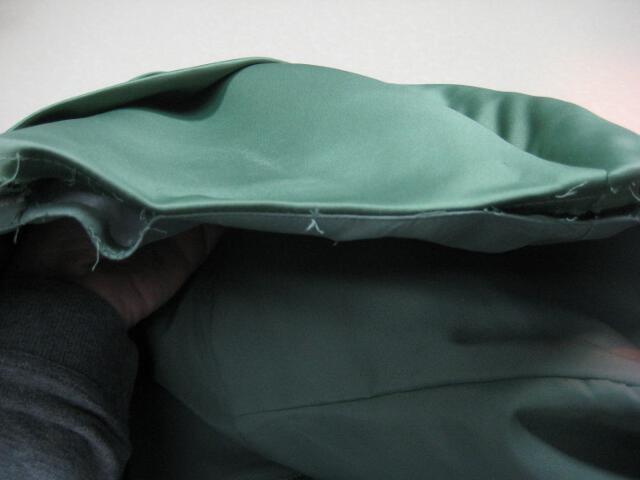
|
STEP FIVE
Here is what the top edge of your garment should look like. The lining and fashion fabric are separated from each other near the existing bust seams. It's time to flip the dress inside out.
|
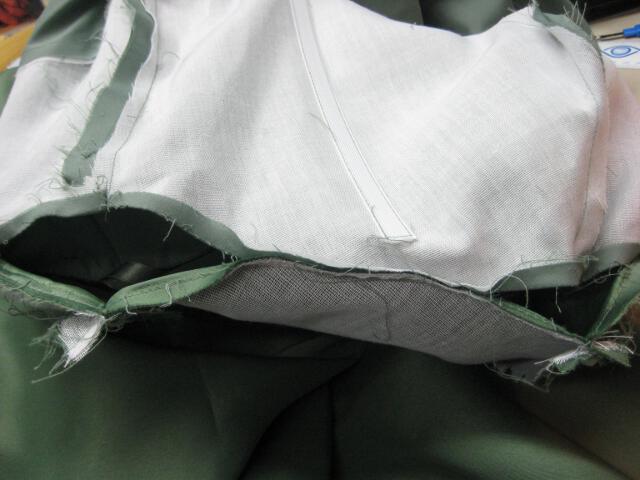
|
STEP SIX
Here you see the inside of the dress. The white that you see is a very stiff interfacing, often used in formal gowns. The center section of boning is clearly visible too.
|
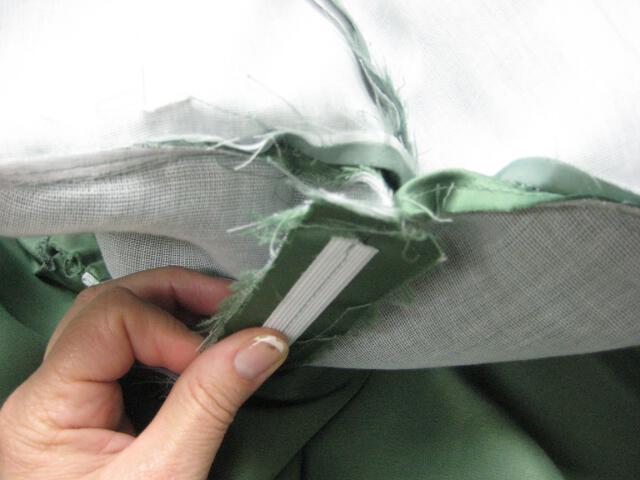
|
STEP SEVEN
In this dress, the boning is stitched directly to the seam allowance. Sometimes it is stitched to the lining and sometimes it has its own casing. These instructions are still the same in each case.
|
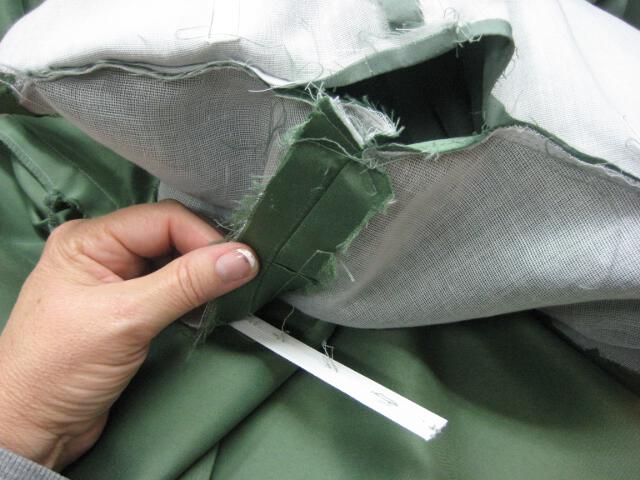
|
STEP EIGHT
Remove the stitching that attaches the boning to the dress. You do not have to remove the piece of boning entirely. The bottom of it can stay attached, making replacement easier.
|
Chart Two: Replace Princess Seams
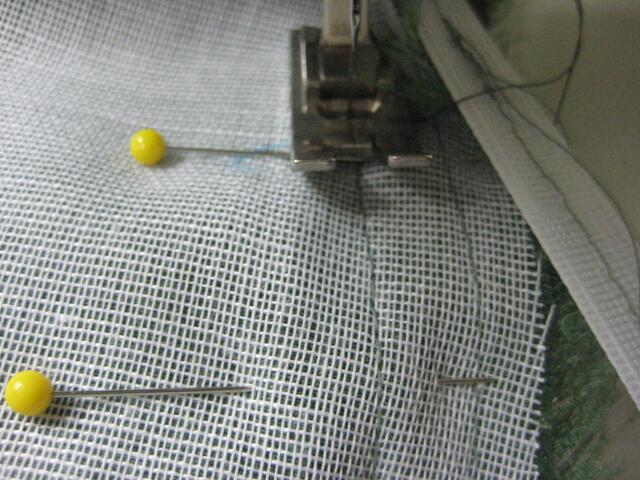
|
STEP NINE
I have used pins to mark the new seam line. Beginning at the old stitching, gradually taper inward on your new markings. Make sure this is a gradual curve or you'll have a pointy seam.
|
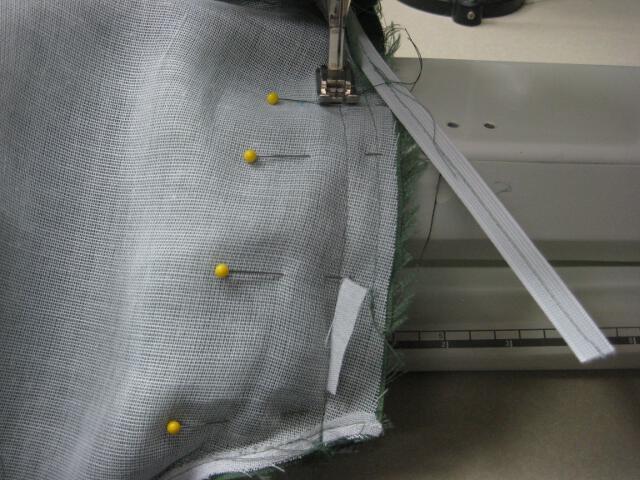
|
STEP TEN:
Here is the wider view. The amount to take in here is a lot, so I am careful to taper gently into the existing seam. If this angle is too severe, you'll end up with an embarrassing "pointy bust".
|
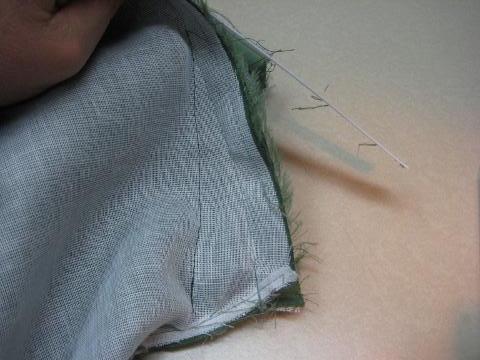
|
STEP ELEVEN:
Your new stitching line will look like this. The boning is out of the way for now and the new seam will tighten the bust area. And see the gentle curve where the new and old stitches meet?
|
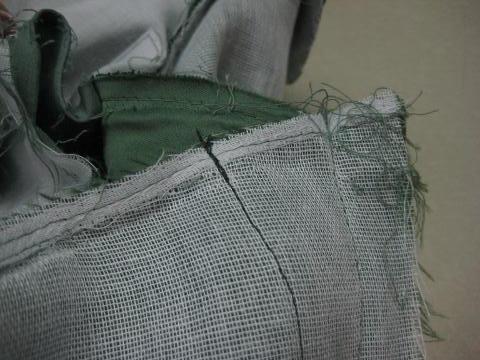
|
STEP TWELVE:
If you are taking in a lot, like I am, you will have a mismatch at the top edge. Sew your bust seam so that it is not puckered, and we will address the uneven top edge in Step 17.
|
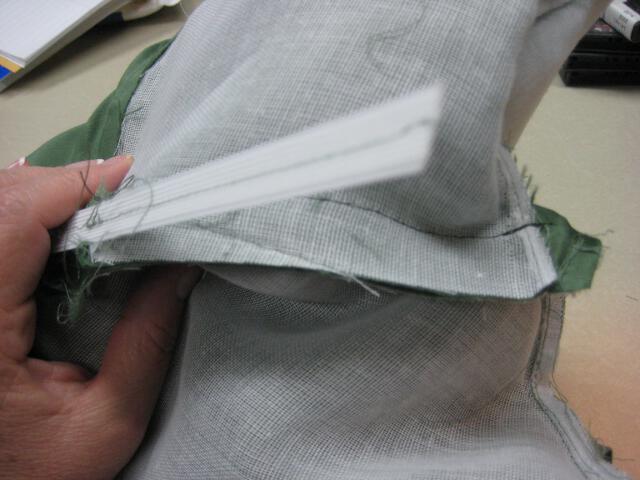
|
STEP THIRTEEN:
Check the fit at this point. If you are satisfied, cut the excess seam allowance down to between ¾" and 1". Press seam allowance open.
|
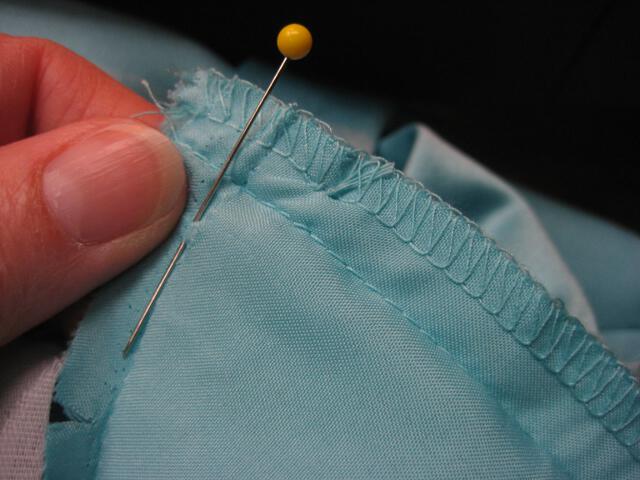
|
STEP FOURTEEN:
Now repeat this process on the lining. If the boning on your dress is attached to the lining, not the fashion fabric, then reverse Step 13 and Step 14.
|
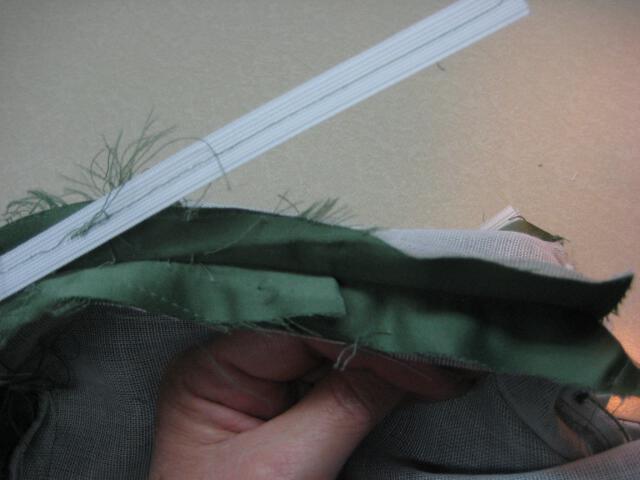
|
STEP FIFTEEN:
Now reposition the boning. Remove the old loose stitches and lay it down on one side of the seam allowance. It will be a little stiff to handle. Pin in place if you like.
|
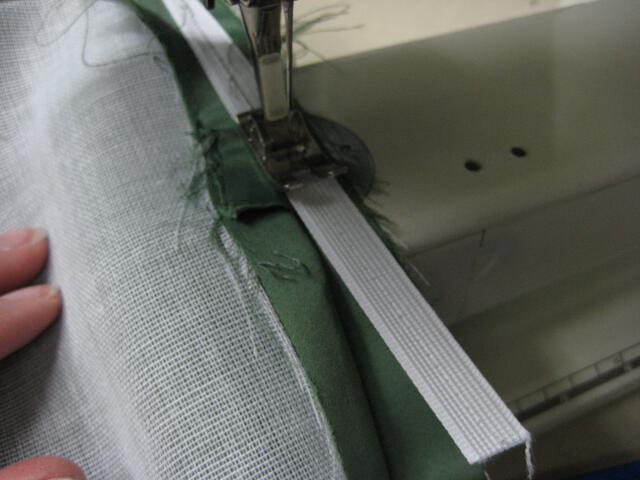
|
STEP SIXTEEN:
Now stich the boning to the one side of the seam allowance. Just run your machine right down the middle. Replace the fabric cap on the end and stitch it down as well.
|
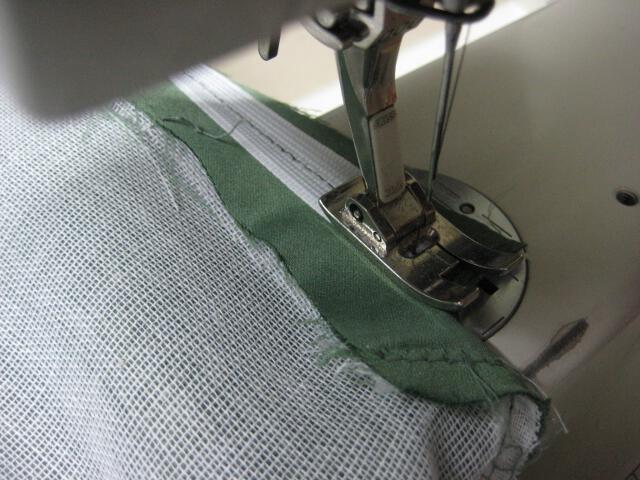
|
STEP SEVENTEEN:
Here is a close up of the boning. Make sure you don't catch the actual seam or the rest of the dress in your stitches. This photo also shows the uneven top edge mentioned in Step 12.
|
Chart Three: Finish Boning and Top Edge
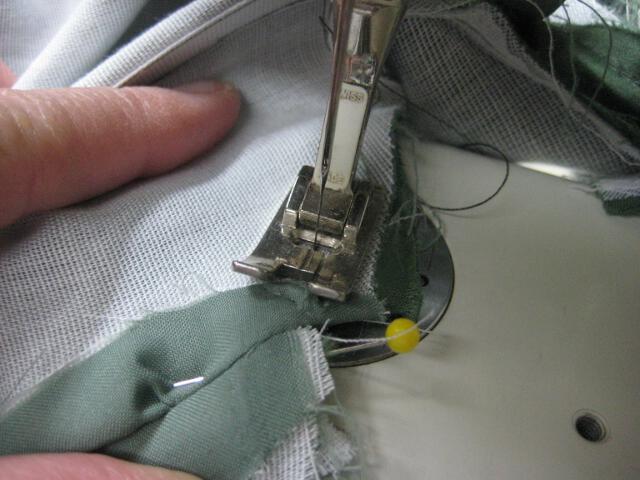
|
STEP EIGHTEEN
You'll need to redraft the top edge line. You can draw this, using a hip curve ruler, or just eyeball it. Make is as smooth as you can get. Start at the shorter side and stitch.
|
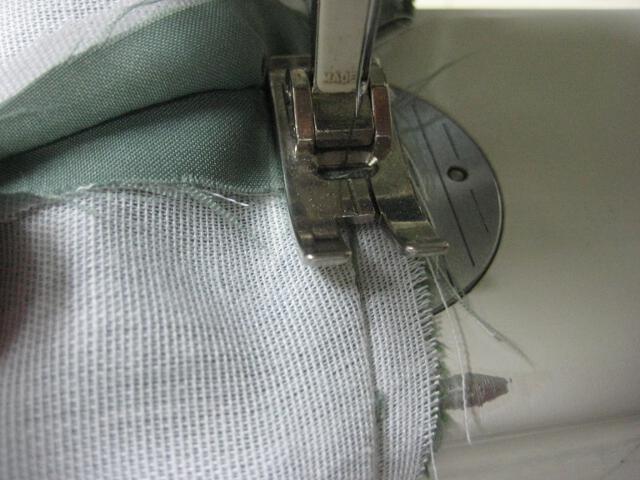
|
STEP NINETEEN
Continue your stitches until your needle meets the existing edge seam. Join the two seamlines and backstitch to secure. Your new line needs to be fairly straight.
|
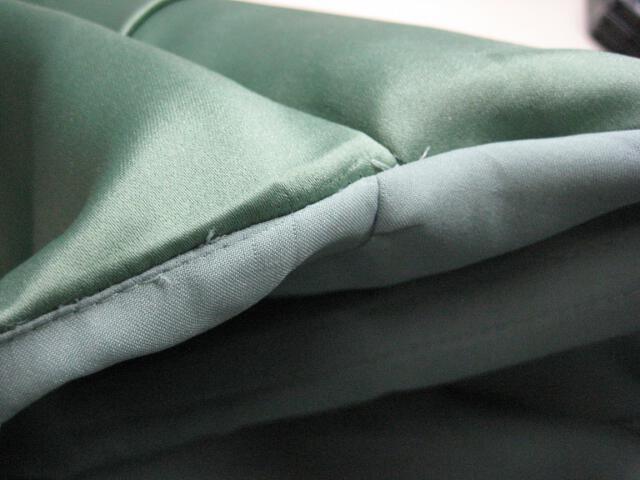
|
STEP TWENTY
Turn the dress right side out and your new top edge should look like this. Watch for excess thread or parts of the seam allowance peeking out the top.
|
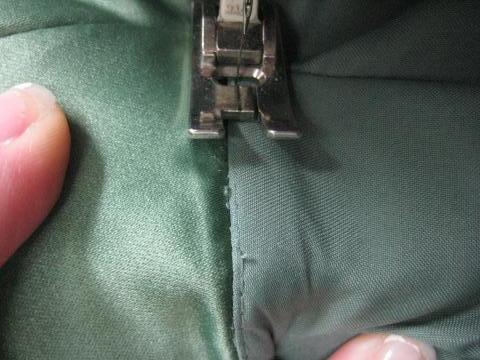
|
STEP TWENTY ONE
Replace the understitching. Put the inside portion of the dress under the machine while keeping the fashion fabric and its interfacing to the left. Reach under and push all of the top edge seam allowance onto the lining (right) side of your needle and stitch.
|
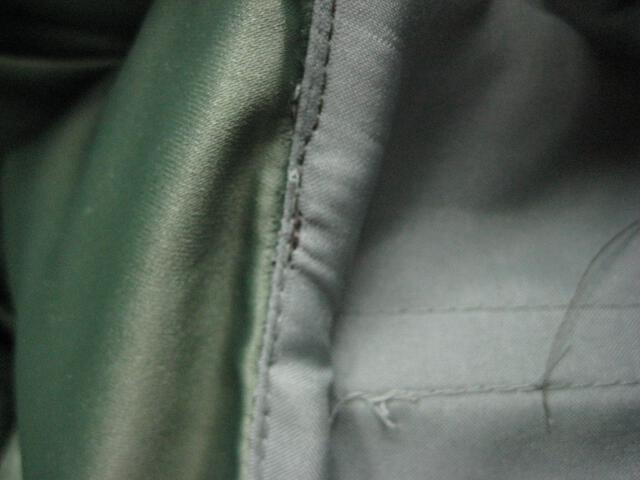
|
STEP TWENTY TWO
Your understitches should look like this. They have sewn the seam allowance to the wrong side of the dress -- the lining side -- so that it doesn't roll to the right side when on the body.
|
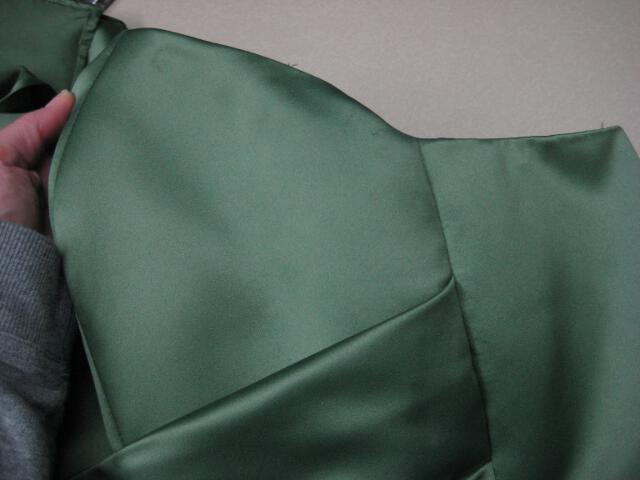
|
STEP TWENTY THREE
And this is the finished product. Yours may look different, if your dress didn't have an extreme amount taken out of both sides. The "dip" in the edge line is not noticable when you have the dress on the body.
|
In Closing...
Most alterations to princess seams are done in this manner. Many are not
taken in this much. You will get a nice smooth edge line if you're
taking the seams in less than the 3+ inches I have taken in on each side!
I have also decided to add the steps necessary to alter these bust seams in the lining. This will come at a later date.
The
biggest thing to remember on this alteration is not to cut anything
until you and the wearer are happy with the fit. Simple press open the
seams and try the dress on before snipping.
Now go try it out. Get yourself a form fitting gown that will flatter your shape while keeping everything in its place!
Return from Princess Seams to Alterations Home Page


























